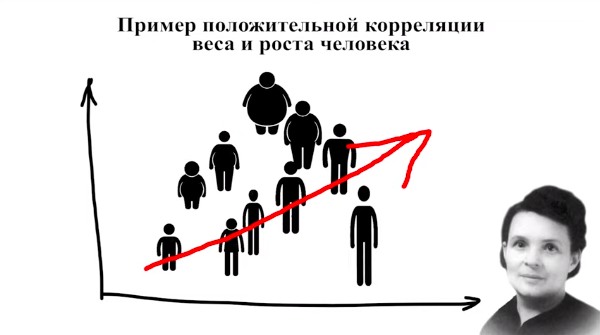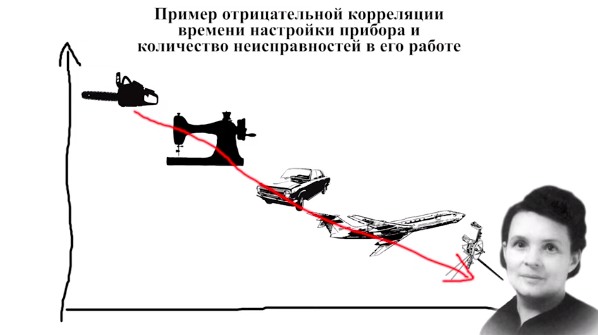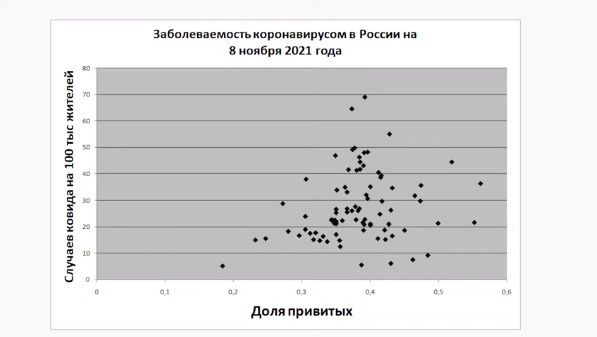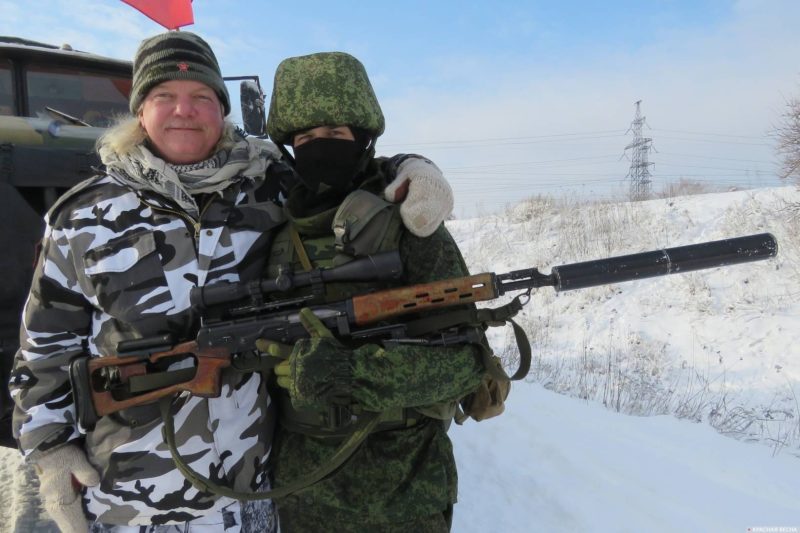18.11.2021, Moscow.
The COVID-19 incidence rate has a weak or no relation to vaccination rates in Russia, said philosopher, political scientist and the leader of the Essence of Time movement Sergey Kurginyan in his original broadcast “The Meaning of the Game.”
Kurginyan cited statistical data for vaccination rate and the number of COVID-19 infected in Russian regions as of November 8, 2021.
The plot based on the available data clearly shows that there is no apparent correlation between vaccination rate and the number of infected people per 100 thousand in the regions of the Russian Federation.
This suggests that there is a very weak or no relation between the Russian authorities’ vaccination campaign and the COVID-19 incidence rate in the country. And this questions the efficacy of mass vaccination as the only way to manage the coronavirus.
“You are telling people who know all the angles on this that you want to save the population,” Kurginyan said in his broadcast. “They say yes, sure, save them, of course. You may use any tough restrictions, we do not mind. But can you analyze the data?”
Sergey Kurginyan indicated that supporters of vaccination mandates refer to school textbooks to prove that they are right. Expressing doubt that state governance and major important decisions could be based on school textbooks, Kurginyan suggested that efficacy of the vaccination campaign be discussed based on a university textbook The Probability Theory by an outstanding Russian scientist, mathematician Elena Ventsel.

In her book, Ventsel discusses relations between variables in terms of statistical correlation.

For example, she notes that a positive correlation, and thus a relation, can be considered between person’s height and body weight. This means, it would be generally right to say that the taller a person is, the heavier he is. Although deviations

An example of a negative correlation, according to Ventsel’s book, is the relation between time spent to adjust a device and the number of errors and malfunctions observed during its operation. Assuming that vaccination rate and incidence rate are variables, Sergey Kurginyan made a plot with the vaccination rate in different Russian regions as one axis and the number of those infected with coronavirus in the same regions as the other axis.

Having made the plot, Kurginyan indicated that its pattern suggests a weak or no relation between vaccination rates and incidence rates.
Kurginyan noted that supporters of forced vaccination avoid any attempts to analyze the available data. “Are this data true or not?” rhetorically asked Sergey Kurginyan.
Source: Rossa Primavera News Agency




